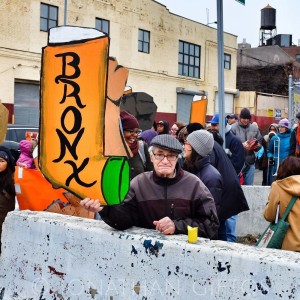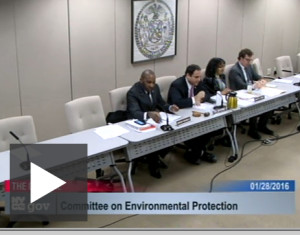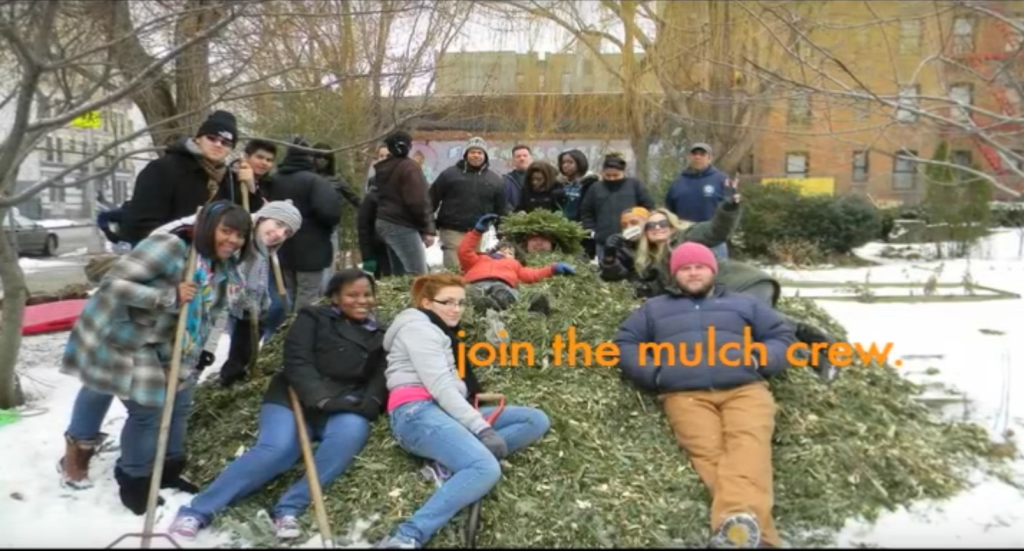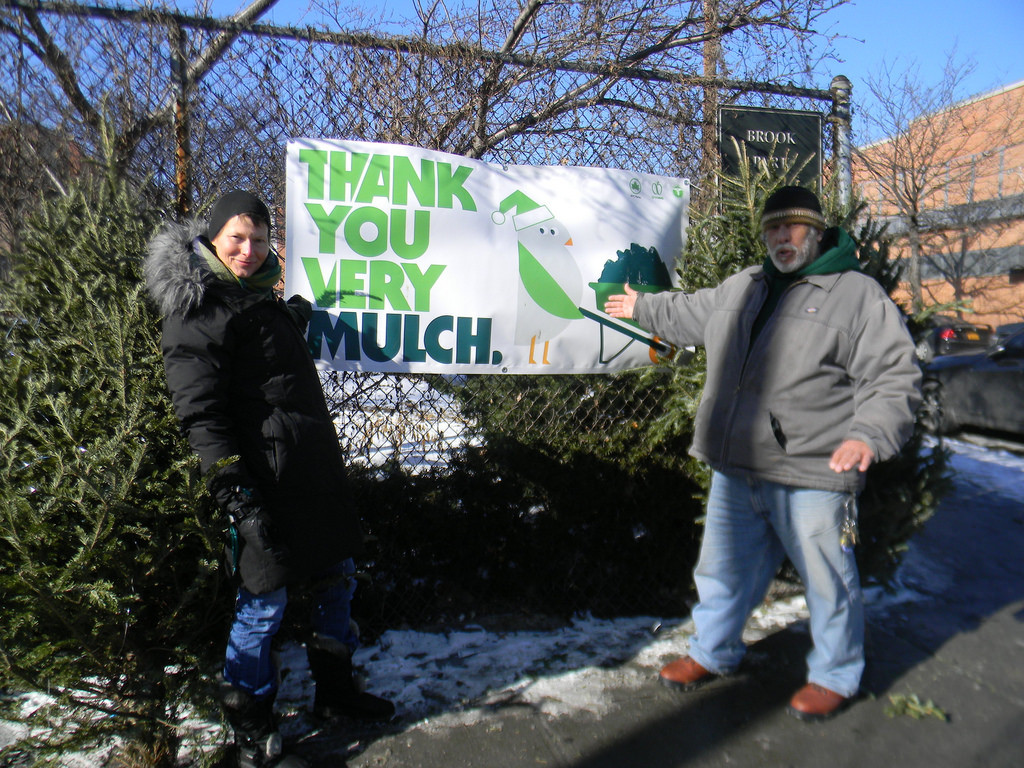We recently testified at NYC Council about two bills regarding Environmental Justice.
The attention to EJ issues is very important, and the two bills can be strengthened with your voice!
Selections from our testimony are below and will offer you a bit more information on our perspective of this evolving issue.
Send an email to the Policy office of Costa Constantinides, Chair, Committee on Environmental Protection
Click here to send an Easy Email for EJ
The sincere interest in Environmental Justice issues was evidenced by an overflow crowd with dozens having to wait outside a recent public hearing. The NYC Council is considering two bills that would create an interagency taskforce and a concurrent advisory board as well as authorize a study to yield recommendations regarding EJ issues. It is encouraging that the Committee on Environmental Protection under the leadership of Council Member Costantinides is dedicating attention to this.
Environmental Justice is the fair treatment and meaningful involvement of all people regardless of race, color, national origin, or income with respect to the development, implementation, and enforcement of environmental laws, regulations, and policies. In NYC some neighborhoods bear the burden of hosting more polluting facilities and less parks and waterfront access than others, this is a plain fact.
While learning more about the type, sources and locations of the entities and infrastructure that are leading to the health crisis impacting parts of our City is a laudable goal of this legislation, many of us know already all too well what and where the problems are. The problem is that impacted frontline communities are rarely consulted and even then it usually desultory and merely advisory.
And many of us in EJ communities will attest, we have had enough studies and task forces about these issues and we need restorative action now. Enforceable mandates and regulations are urgently required to limit and even reverse the historically disproportionate impacts the siting of polluting facilities has had on certain communities in NYC.
For example such action on the EJ front could take the form of limiting to 20% the amount of garbage handled by any of the 5 boroughs, restricting the number and acreage of power plants allowed in any Community Board, creating a cap on the number of diesel truck industries or dry cleaning facilities allowed in any neighborhood, and so on. While at the same time creating enforceable mitigating recommendations, for example 1000 trees for every ton of Cox emission, 1 acre of open space for every 10 acres of industrial or residential development.
To achieve the stated EJ goals Council should also turn attention towards reforming ULURP, the kafka-esque land use process that most proposed development in the City goes through.
There are many recommendations for reform, from the Manhattan Institute to the Neighborhood Retail Alliance and Pratt. For starters, the ULURP process needs to better consider and address the cumulative impacts of a number of densely located projects in any area. For example, the controversial Bronx Terminal Market and the Yankee Stadium projects were considered each in isolation without evaluating the cumulative impacts of these adjacent projects that would attract thousands of newcomers each day. The traffic, loss of open space, impact on surrounding community were not considered as they would be in reality, but according to a severely flawed process.
Furthermore, local community voices need to be better integrated during every step of the ULURP, especially the “Mitigation” and “Alternatives” aspects of that process. Local resources and knowledge are uniquely positioned to best inform how to stop or mitigate the deleterious ramifications of hundreds of diesel trucks, the loss of hundreds of trees or the lost opportunities of other possibly more green development. State Agencies and land and roads currently excluded need to be included in the ULURP process as well.
The taskforce as proposed does not include representatives from NYC Economic Development Corporation and related Industrial Development Agency. As the ongoing controversy around larding one of the largest subsidy packages ever on diesel truck company Fresh Direct shows, the EDC and IDA have been guilty of negatively impacting Environmental Justice communities with their opaque decision making that gives away cash grants and tax breaks to polluting low wage industries.

It will be welcomed if a further level of review and over-site of top down rezoning plans will be part of the purview the EJ interagency taskforce. Too late now, but the Mayor’s recent Industrial Business Zones change has fixed some communities with a toxic burden forever. With the stated intention of protecting manufacturing jobs, the Mayor has literally banned the creation of any kind of residential development. This inexplicably self hampered his own touted aspirations to create Senior and Affordable Housing in wide swaths of NYC.
Such a one size fits all approach has doomed EJ pockets of NYC to be the dumping grounds of power plants, diesel trucks businesses like FedEx or yellow school bus companies and construction debris handling. An EJ Advisory Board may have earlier elucidated this surely unintentional result.
The composition of any Advisory Board needs to be as democratic and reflective of the real grassroots demographics of communities. The Council should look at best practices across the country for the ideal method of composing such a body. As currently proposed, the Speaker would appoint an astounding 17 of the members. This may seem like a smart strategy with an ally in office, but for long term success and greater stakeholder engagement these appointments ought to be more evenly distributed to Borough Presidents, Community Boards or others. In fact why not have at least one member of the EJ Advisory Board from every Community Board?
Other such EJ entities offer cautionary tales to be learned from. The New York Power Authority currently has an EJ Task Force. They do not meet regularly and have little if any information online. No one from our Port Morris neighborhood of the South Bronx is part of it, despite the fact that government agencies have temporarily permitted not one but FOUR power plants on prime waterfront real estate that has thwarted the aspirations of our community.
We have to take care that the Advisory Board does not become an instrument and tool of recommending pet projects in more politically connected areas of the City. The law also needs to be more clear about meeting times and accessible locations. Currently it would meet at most two times a year. If EJ issues are to be considered seriously this is inadequate.
There are other suggestions raised by advocates that should be addressed as the final version of these pieces of legislation are formulated and other policies and practices that could readily advance the cause of Environmental Justice are considered by the Council. Having more meetings with room for everyone and at a time when people are not at work 9-5, or longer, would be a good first step.




